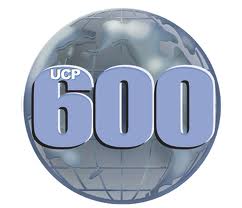 Sourcing from China can be a daunting affair. There are all sorts of hurdles and roadblocks that need to be navigated, made even more difficult by the vast cultural and geographic limitations of language, time, and distance. But even once a reliable source has been identified and validated, the terms of trade agreed, and logistics arranged, there is still the question of how to finance the underlying transaction.
Sourcing from China can be a daunting affair. There are all sorts of hurdles and roadblocks that need to be navigated, made even more difficult by the vast cultural and geographic limitations of language, time, and distance. But even once a reliable source has been identified and validated, the terms of trade agreed, and logistics arranged, there is still the question of how to finance the underlying transaction.
A frequent problem for importers is that most all Chinese manufacturers will require some form of downpayment upon issuance of your Purchase Order (PO), with the balance due prior to or at the on-board date. However, most buyers of Chinese product do not have their goods pre-sold with cash in hand at the time of export to finance these purchases. Therefore, there is most always a financing gap that needs to be addressed.
It may be difficult to get bank financing for an import business. As a result, you may have to turn to alternative methods to fund your imports. What follows is a brief discussion of some of these methods.
Short of getting your suppliers to provide financing (which, as mentioned above , is usually not an option), you may be able to get them to accept a commercial letter of credit. If your credit risk is good and you have decent relationships with your commercial banks, you can open a letter of credit in favor of the exporter for the full amount of the purchase order. There are some banks that will also offer advance payment or “red clause” letters of credit that will also allow a drawing against the L/C amount prior to export to cover the downpayment requirements. Bear in mind that the fees and charges on a letter of credit can be expensive. Issuance is usually around 1% (flat) of the issuance amount, but the fees levied by banks outside of the applicant’s country can be over 2% (flat), and even more for smaller L/C amounts of under $75,000. But the more difficult hurdle is that exporters want to receive payment for the goods as soon as they ship and the importer would like terms so that they have time to receive the goods and sell them to their customers in order to pay for the cost of goods sold. There are numerous ways to structure these instruments and anyone contemplating the use of an L/C should seek expert counsel and advice before getting too far into this process.
Accounts Receivable Factoring
Factoring in its most basic form involves selling your accounts receivable to a factoring company at a discount to face value. Most factoring companies provide financing to the seller of the accounts in the form of a cash advance that is usually between 70-85% of the purchase price of the accounts. The balance of the purchase price (or face value of the receivable) will be paid, net of the factor’s discount fee (commission) and other charges, upon collection. This is a typical asset based loan where the bank is lending mostly against the value of the receivables vs. the overall credit risk of your balance sheet and income statement. While the cost is usually more expensive than a bank loan, it certainly provides some financial flexibility to entities that do not have strong balance sheets and that are selling to credit worthy entities.
Inventory Financing
Inventory financing for use in funding imports, in short, is a loan made to an importer that utilizes the importer’s existing inventory as collateral. The import itself is not a party to the loan agreement. However, the use of funds may be utilized for the purchase of the required imports that will ultimately add to inventory on the balance sheet. There are a number of ways in which a bank or financial institution can structure inventory financing, depending mostly on how closely lenders control credit availability and collateral. In asset based lending, the strictest form of inventory financing will utilize a borrowing-base formula (derived by multiplying the value of eligible collateral by an advance rate or discount factor), control cash receipts, and carry out field audits. Asset based loans are structured so that collateral will be readily available if the loan must be liquidated. These types of loans are sometimes referred to as “commercial finance” or “fully followed” lending. Less stringent, secured financing can also be used that involve less rigorous collateral controls and monitoring. Yet any form of inventory financing will have as a common underlying denominator a collateralized loan that is made against the value of a borrower’s inventory. Because this type of financing is usually used by borrowers who do not have access to other types of commercial or trade loans, they are usually more expensive. Furthermore, it is not often recommended to use working capital financing for an international trade operation since most banks have lower capital requirements for trade loans and instruments than they do for working capital loans on their balance sheets. As a source of permanent working capital or for seasonal working capital needs, it can be effective. But for trade operations it is not recommended.
Purchase Order Financing
Purchase order financing is similar to factoring your accounts receivables in that the commercial lender or finance company will be assigned or purchase the rights to the flows of an underlying trade transaction. The difference though is that in PO financing, the commercial finance company assumes the risk and the task of billing and collecting. Under this scenario, suppliers are paid directly for the export of goods. This is usually covered via a letter of credit. After the products are delivered to the buyer (the issuer of the PO), the commercial finance company collects from your customers and remits to you the net amount of proceeds after they have deducted their fees and commissions. Again, this form of financing is certainly more expensive than a bank loan, but if commercial or trade financing alternatives are not available, it is an option that can be pursued.
There is a fourth option that is not often utilized but is a very efficient and effective way to finance your imports: a purchasing center that is located in the country of origin. Many experienced exporters or trading companies are set up and structured to handle the complexities of buying product in foreign countries. For importers that are processing numerous orders to a wide array of factories may prefer to consolidate orders with a single entity that will coordinate procurement, production, container consolidation, and delivery. It greatly simplifies the purchasing process. Many of these same entities will also offer their clients financing alternatives. Companies offering purchasing services that are located in the same country as the manufacturer of your goods may be able to negotiate better payment terms with suppliers and these terms can be passed along to the importer. Additional agency services involving quality control, production management, purchasing and others are also offered by many of these same agents.
For additional information on financing alternatives, you can contact your Sertus representative today at 1-877-6-SERTUS or info@sertusllc.com.



